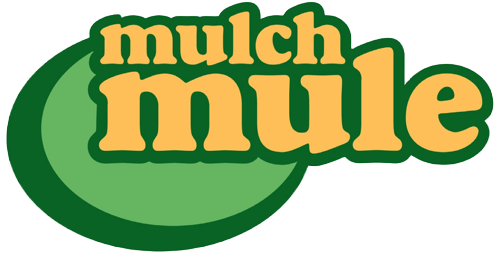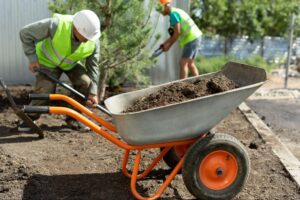If you keep doing what you’ve always done, you’ll keep getting the same results. If you’re aiming to increase profits, something has to change. Simply adding more people isn’t the answer anymore—those days are behind us.
In today’s rapidly evolving landscaping industry, staying competitive demands more than traditional methods. Rising labor costs, tight project deadlines, and increased customer expectations require businesses to work smarter and faster. Landscaping technology—the use of advanced machinery and automated systems—empower multigenerational landscaping businesses to streamline operations, enhance safety, and boost profitability.
Modern tools not only save time but also reduce physical strain, allowing crews to focus on higher-value tasks. Integrating technology is no longer a luxury; it is critical for securing long-term growth and meeting the demands of eco-conscious, efficiency-driven clients.
This article explores the transformational impact of landscaping technology and offers actionable strategies for future proofing your business.
The Growing Role of Technology in Landscaping Operations
The landscaping industry is in the midst of a technological transformation. Advanced equipment simplifies tasks like material handling, debris removal, and automated irrigation, replacing labor-intensive manual processes. Tools such as live-floor trailers and high-powered debris loaders deliver faster, more consistent results. For instance, some advanced live-floor systems feature rapid discharge capabilities that can significantly reduce unloading times, although performance can vary with different equipment and operating conditions. These innovations allow businesses to take on larger projects with smaller teams while helping maintain the level of quality clients demand.
By automating repetitive tasks, technology allows for more efficient use of workforce resources. This shift not only speeds up project timelines but also reduces the physical risks associated with manual labor and paves the way for safer, more sustainable practices.
Key Innovations Driving Change
Recent developments have significantly reshaped operational workflows:
- Advanced Live-Floor Trailers: Some systems feature automated discharge capabilities that can significantly reduce unloading times. While certain models have demonstrated rapid performance under ideal conditions, the exact time savings may differ based on specific equipment and operating environments.
- Debris Loaders and Vacuum Systems: High-powered systems compress and clear organic material more quickly than manual methods.
- Smart Irrigation Systems: Programmable solutions optimize watering based on real-time weather data, ensuring efficient water use.
These innovations are transforming how landscaping businesses meet customer expectations while managing costs.
5 Key Benefits of Embracing Technology
Adopting modern technology delivers measurable benefits that drive operational success:
1. Reduced Physical Labor
Automated tools, like live-floor trailers and debris vacuums, take over heavy, repetitive tasks. This reduction in manual labor not only decreases worker fatigue and injury risks but also enables teams to focus on creative and higher-value activities.
2. Enhanced Safety Standards
Modern equipment incorporates safety features such as remote controls and ergonomic designs. For example, live-floor systems eliminate the need for workers to climb into trailers, thereby significantly reducing injury risks. Fewer accidents mean lower insurance premiums and minimal downtime.
3. Increased Productivity and Faster Project Completion
Technology improves workflow efficiency. For example, automated mulch systems can enable a smaller crew to work more effectively. Industry insights suggest that automation allows teams with fewer members to accomplish tasks that previously required larger crews; however, the actual productivity gains depend on the specific technology used and job conditions. Faster project turnaround supports more jobs within the same timeframe, boosting client satisfaction and repeat business.
4. Consistent, High-Quality Results
Automated and precision tools ensure uniform application of materials, which builds trust with clients. Consistency in work quality translates into a strong reputation and lasting client relationships.
5. Improved Employee Morale and Retention
Employees benefit from reduced physical strain and a safer work environment. When workers see that their wellbeing is prioritized through innovative solutions, job satisfaction and loyalty increase, leading to lower turnover and a stronger team overall.
Future Proof Your Landscaping Business
To remain competitive, investing in scalable, future-ready equipment is essential.
Scaling Operations with Efficiency
Innovative tools allow businesses to handle larger projects without adding significant labor. Equipment like live-floor trailers and automated loaders empower teams to move materials quickly and efficiently, ensuring smooth operations even under peak demands.
Long-Term Financial Advantages
Modern equipment reduces labor hours and minimizes the risks of costly injuries or equipment failure. The savings generated can be reinvested into other growth areas, such as training or expanding service offerings, creating a sustainable competitive advantage.
A Model of Modern Innovation: The Mulch Mule
The Mulch Mule exemplifies the benefits of embracing advanced landscaping technology. With a 15-cubic-yard aluminum hopper, live-floor system, and a rapid discharge function that can significantly enhance efficiency under optimal conditions, it enables teams to load and unload materials with greater speed. Optional attachments, like the debris vacuum loader, expand its versatility, making it effective across multiple seasons—from spreading mulch in spring to cleaning up leaves in fall.
Watch this video to learn why owners who own this innovative piece of equipment say it’s the most durable, versatile and efficient piece of equipment for landscaping.
Mulch Mule offers user-friendly remote-control operation that reduces the learning curve and physical risk, ensuring seamless integration into daily operations. By investing in tools like the Mulch Mule, landscaping businesses can position themselves to tackle larger projects, improve client outcomes, and reduce operating expenses.
Harnessing Data and Analytics for Smarter Landscaping
Beyond hardware advancements, the integration of data analytics in landscaping technology is revolutionizing project management and decision-making. Digital tools that collect real-time onsite data allow landscaping businesses to monitor equipment performance, track project progress, and predict maintenance needs. For instance, sensors installed on automated machinery can alert managers when service intervals are approaching, thereby preventing unexpected downtime and extending the lifespan of equipment.
Predictive analytics tools guide businesses in resource allocation by analyzing historical project data, seasonal trends, and environmental conditions. This proactive approach helps optimize scheduling, ensuring crews are deployed at peak times and reducing idle labor costs. Additionally, analytical dashboards can compile performance metrics, providing a clear picture of operational efficiency and financial savings.
These insights empower business owners with the ability to make informed decisions, adapt quickly to changing conditions, and fine-tune processes to increase overall profitability. Real-time reporting of energy usage and material consumption supports sustainability initiatives, further enhancing the appeal to environmentally conscious clients.
Overcoming Barriers to Technology Adoption
Multigenerational landscaping businesses, deeply rooted in traditional practices, can face significant challenges when incorporating new technology into their operations. These challenges often stem from resistance to change, attachment to established procedures, and apprehension about the implications of technology on the workforce. However, addressing these barriers is crucial to ensuring long-term competitiveness and operational efficiency. By adopting a strategic approach that emphasizes transparency, gradual implementation, and comprehensive training, landscaping businesses can effectively incorporate technology while maintaining harmony within the team.
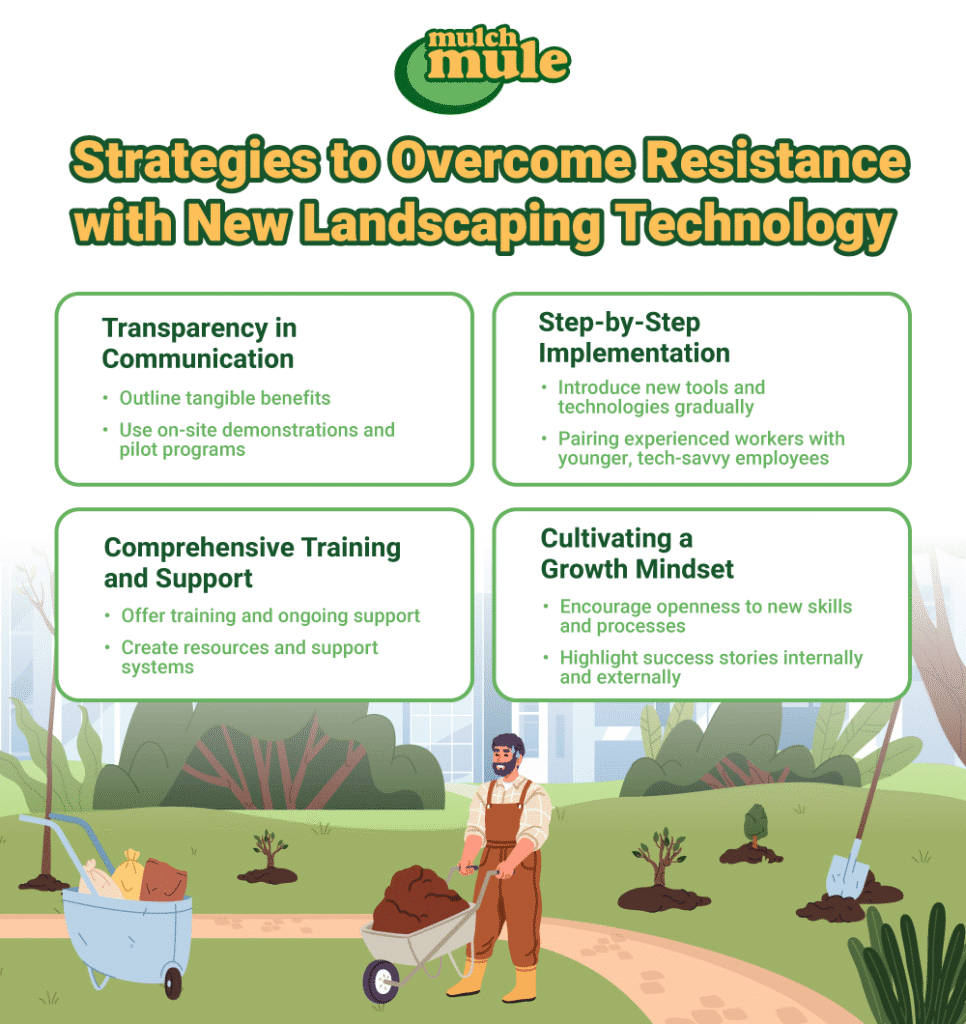
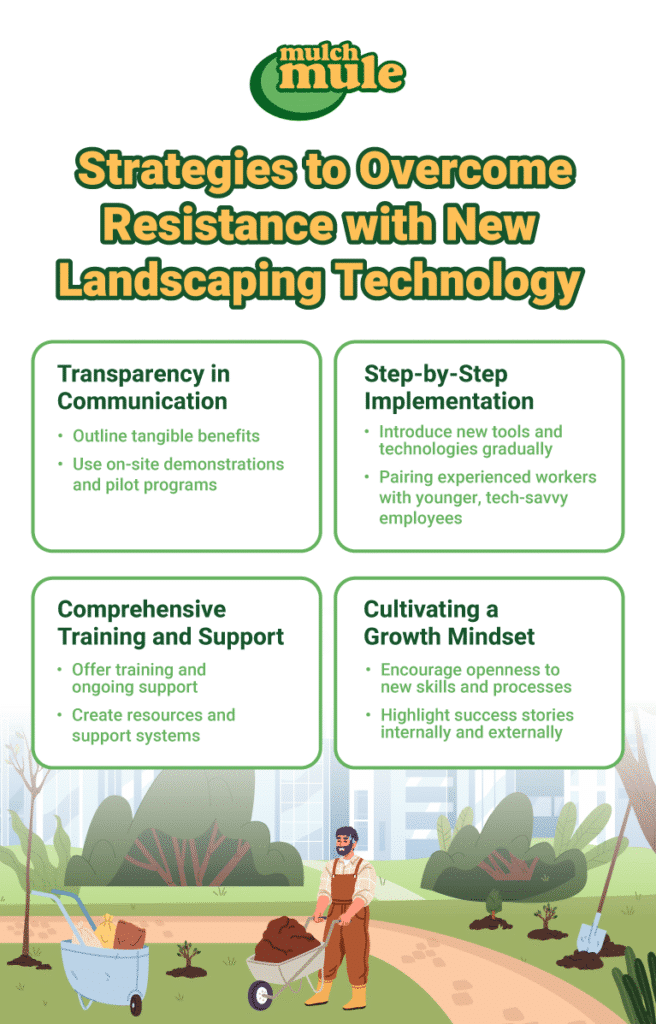
Addressing Resistance with Transparency
Clearly communicate the tangible benefits of technology—reduced physical strain, faster project completion, and improved job satisfaction. On-site demonstrations and pilot programs can help skeptical team members experience these benefits firsthand.
Introducing Technology Gradually
Phase in new equipment step-by-step to allow employees to adapt without drastic disruptions. Pairing experienced workers with younger, tech-savvy team members can foster mutual learning and build confidence in new systems.
Empowering Through Training
Offer hands-on training sessions and ongoing support to overcome any learning curve. Ensuring employees have clear instructions and accessible help makes the transition smoother and positions technology as a tool to enhance their skills rather than replace their expertise.
Cultivating a Growth Mindset
In the evolving field of landscaping, encouraging a growth mindset is essential for sustained success, especially in multigenerational businesses where traditional methods have long been the norm. A proactive approach to learning and development allows companies to thrive despite market changes and technological advancements.
Introducing technology into a multigenerational landscaping business requires more than just new equipment—it’s about fostering a culture of collaboration and continuous learning. By addressing resistance thoughtfully and implementing changes steadily, businesses can achieve a seamless transition. The goal is to empower employees by showing them how new technology is an asset that complements their abilities, paving the way for sustained growth and success in a competitive landscape.
Aligning Technology with Customer Expectations
Modern clients expect efficiency, consistency, and sustainability. Integrating landscaping technology helps meet these demands:
Accelerating Service Delivery
Automated systems ensure that jobs are completed quickly and reliably. This speed not only satisfies clients but also enables the business to take on more projects, increasing revenue potential.
Delivering Consistent, Professional Results
The precision of advanced tools ensures uniform application of materials, which enhances the overall quality and professionalism of work. Consistency builds trust, encouraging repeat business and long-term client relationships.
Embracing Sustainability
Eco-friendly technologies like smart irrigation and automated material handlers reduce waste and promote resource conservation. Highlighting these sustainable practices improves your reputation with environmentally conscious clients.
The Role of Safety and Employee Wellbeing
Prioritizing safety and employee wellbeing is not only ethical—it also boosts efficiency and profitability.
Integrating Safety into Operations
Using technology with built-in safety features lowers the risk of workplace accidents. Automated systems reduce the need for physically dangerous tasks, ensuring projects stay on schedule with fewer delays.
Enhancing Employee Satisfaction
When workers are relieved of the most strenuous tasks and provided with a safer environment, overall job satisfaction increases. Satisfied employees are more likely to stay with the company, lowering turnover costs and contributing to a positive workplace culture.
Building a Positive Reputation
Companies known for their strong commitment to employee wellbeing tend to attract top talent and loyal clients. A focus on safety and support not only protects your workforce but also strengthens your overall brand.
Maximizing ROI Through Smart Technology Investments
Investing in advanced landscaping technology can generate substantial returns. Many firms report enhanced efficiency, improved project outcomes, and reduced operational risks following technology integration. Regular equipment evaluations and continuous training ensure that these investments continue to deliver positive returns over time.
Emerging Trends and Future Predictions
Looking ahead, the evolution of landscaping technology promises even more groundbreaking advancements. Emerging trends include the use of drone technology for aerial site assessments, AI-driven maintenance scheduling, and augmented reality tools for project planning. These advancements are beginning to reshape workflow dynamics, offering unprecedented insights that further optimize project planning and execution. As these trends mature, they will blend seamlessly with existing systems, ensuring that businesses continually refine their processes and remain at the cutting edge of industry innovation.
Shaping the Future of Your Business with Technology
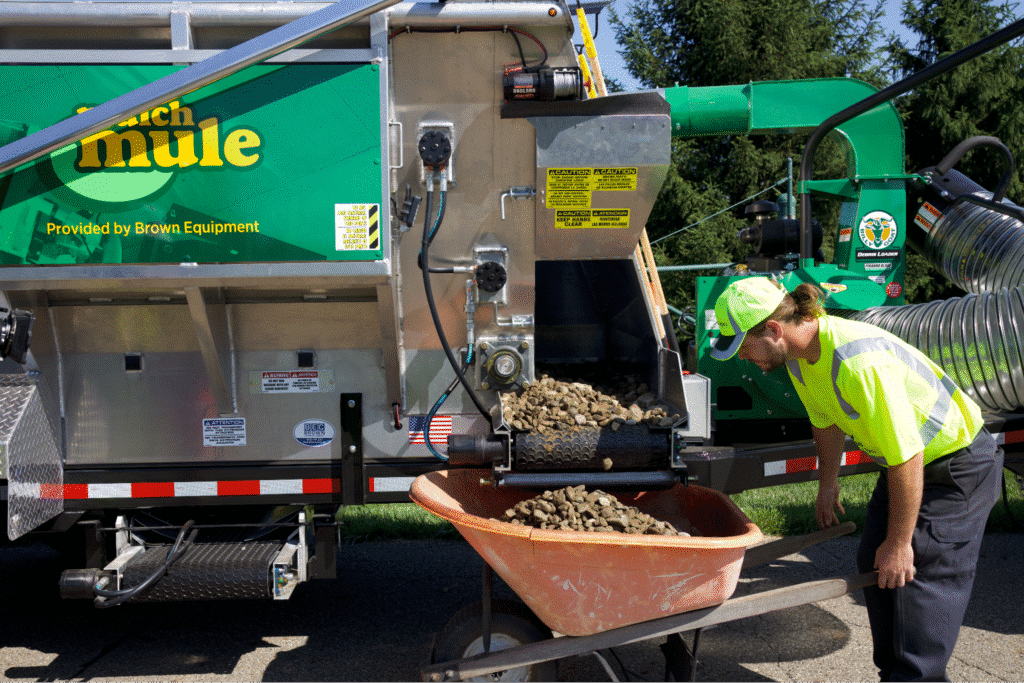
Modern landscaping technology is redefining what success looks like in the industry. From reducing physical labor and enhancing safety to supporting faster project completion and consistently high-quality results, advanced tools empower businesses to meet today’s demands and prepare for tomorrow’s challenges.
Integrating these innovations isn’t merely about upgrading equipment—it’s about investing in a sustainable future. Embracing technology, exemplified by systems like the Mulch Mule, positions your business for long-term growth by enhancing operational efficiency, safeguarding employees, and delighting clients with professional results.
Take the first step to transform your operations by exploring innovative landscaping equipment. Contact us today to set up a demonstration of the Mulch Mule trailer to see first-hand how they can help streamline your day-to-day tasks. Ready to discover how embracing modern automation can drive lasting success in the competitive landscaping market? We’re ready to talk with you.
